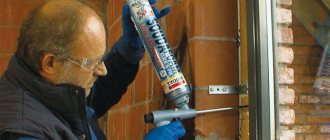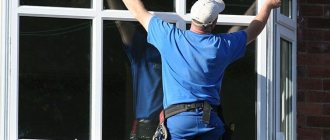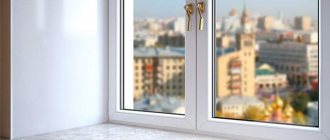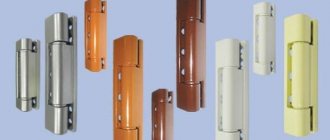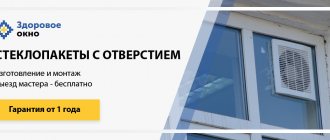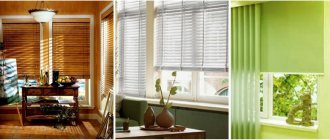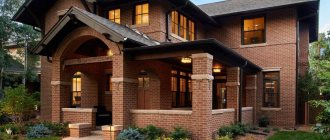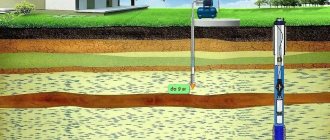Plasterboard (GKLV, GKLVO) and gypsum fiber sheets (GVLV), along with plaster, are the most common material for slopes of plastic windows.
According to statistics, they are more popular than plastic boards, sandwich panels and, of course, than budget polystyrene foam and expanded polystyrene.
There are general evaluation criteria: susceptibility to condensation and cracks, insulation, simplicity and speed of work, durability, costs.
It should be taken into account that plastic windows also have their own characteristics (tightness, density, expansion coefficient), which affect the behavior of the finishing around them.
Let's consider plasterboard and gypsum fiber for slopes near PVC double-glazed windows, in what parameters they are the best, advantages, disadvantages and features. We will also describe the features of the work, list the difficulties, indicate what to pay attention to, and how to avoid mistakes.
Can it be done on PVC structures?
External slopes are not made of gypsum fiber board , gypsum plasterboard, even waterproof ones, however, like gypsum plaster. There is no need to explain the reason: plaster absorbs moisture and becomes deformed, lags behind, slips, cardboard bubbles. Such products, unlike cement-sand mixtures and plastic panels, are not designed to withstand outdoor conditions.
There are reviews that puttyed gypsum boards with a composition for external work stood as an external slope for about 10 years without any special comments. Perhaps such cases exist, since the material is protected by finishing, but it is unlikely that specialists will give a guarantee of high-quality service in such an environment.
Important! There are two exceptions for finishing made of gypsum, lime (gypsum plasterboard, gypsum board, plaster), even if they are positioned as moisture resistant: outdoor (street) environments and wet rooms with high (above 75%) humidity.
Plasterboard slopes near PVC windows are made only internal . The owners of the premises do such external (exterior) finishing only at their own risk and peril; there is too high a probability that in a short time it will become unusable. Plastic linings or cement-sand plasters are intended for the street.
It is also undesirable to use drywall in rooms that are not wet, but where there is a strong influence of steam and other fumes, for example, in kitchens with intensive work processes (although if the mode is normal, then there are no warnings).
The standards and technical conditions of some large construction organizations specifically prescribe this limitation:
Finishing
After all the preparatory and main work is done. The structure is assembled and installed. The final finishing is coming. It includes several basic and important steps:
- getting rid of all irregularities;
- forming an outer corner, applying putty;
- alignment of side joints;
- applying a primer;
- applying final putty;
- painting with water-based paint and varnish enamel intended for interior work.
Requirements
When arranging slopes made of plasterboard, surface preparation is less labor-intensive. Let's list the requirements :
- When installed with glue, the panel is inserted into a groove in the mounting foam. It is necessary to very carefully remove the protruding mound of this substance near the frame of the PVC window and make a sample (5 mm) for the slab. Any voids and cracks near the subsequently adjacent end of the sheet should be absent.
- It is highly recommended to make expansion joints or at least install a vapor barrier membrane. At a minimum, update the foam, choose the old one, foam the gaps between the frame and the wall more carefully and densely.
- The surface of the slope is cleaned of debris, dust, and any adhering substances (old building materials, paint, etc.). It is important to degrease if grease stains are noticed or there is reason to suspect the presence of such substances in these places. This is especially true if adhesive fixation is used.
- Slopes are influenced by moisture, temperature changes, and condensation, so the surface is treated with a moisture-resistant, antiseptic, antifungal primer, preferably in 2 layers. For porous walls, deeply penetrating strengthening agents are used.
- For the glue method, it is more desirable to level the base with putty (moisture resistant).
But special precision, as when finishing slopes with plaster, is not required, the main thing is that there are no irregularities that could raise or lower the slab along its entire length, that is, you need to ensure that its edges are at the same level. However, you can completely abandon leveling, especially if the frame method is used.
Reference! For the evenness of the base wall of slopes under plasterboard there are no such stringent requirements as for plaster. The sheet is installed with some gap filled with adhesive and insulation.
Disadvantages and roughness, of course, will not appear. That is, even fairly large-scale irregularities will not affect the evenness of the panel at all; moreover, it will hide them.
Plasterboard sheets are also called gypsum board (GP). Gyproc is not the name of the material, it is a foreign trademark of a manufacturer using its own technology, sometimes it is considered to be of higher quality, but this is a separate topic, for example, the same Knauf is sometimes better.
Gypsum fiber non-flammable GVL
It is a homogeneous sheet. Belongs to the group of fire-resistant, slightly flammable. You can hammer nails and screw in self-tapping screws. Density is achieved through additional components. The density is equal to expanded clay concrete. Doesn't crumble. Resistant to mechanical stress and frost. At high humidity, it absorbs excess. And when there is a shortage, he gives. The itself is very fragile. You have to work with it carefully.
If you want to extend the service life. Do not cover the surface with silicate paints, putty, or liquid glass-based enamel.
Author of the site
What types are suitable?
There are only two requirements for plasterboard/gypsum fiber sheets for slopes under plastic windows:
- Thickness: GKLV/GKLVO from 12.5 mm, GVLV – from 10 mm.
- Only moisture resistant (wall).
A simple non-moisture resistant material (ceiling; 9.5 mm or any other thickness) will quickly bubble, even if it is plastered. This solution is only acceptable in perfectly dry conditions. In extreme cases , you can reduce the thickness, but the sheet must be moisture resistant .
For window slopes we use GKLV or GKLVO (green). The last letters: “B” - waterproof, “VO” - waterproof-fireproof.
If we talk about gypsum fiber, then, by analogy, it’s GVLV, it doesn’t have color designations (however, it may be found in some manufacturers). There is also no “GVLVO” marking - this material is always produced fireproof. Gypsum fiber is stronger, so you can be satisfied with 10 mm , but the larger the number, the better.
Manufacturers have their own technologies and solutions, so the color of the material may not always correspond to those accepted according to the traditional scheme - you need to clarify and look at the markings, which must be right on the sheet.
Note. Moisture resistance does not mean that the material is not afraid of water - it simply has a reduced ability to absorb moisture and is more resistant to deformation under its influence.
For very humid rooms, GKLV/GVLV is suitable only with a caveat: there is a high probability that after some time the sheet will become deformed, swell, bubble, or crack. In addition, the above may appear when painting such a panel.
It is possible to use simple non-waterproof gypsum fiber board/gypsum plasterboard (ceiling) for slopes, but the reliability of such a finish will not inspire confidence. It is necessary to use material with a thickness of 10 or 12.5 mm of moisture-resistant type (wall).
How is it different from gypsum fiber?
In this article we will summarize plasterboard (GKLV) and gypsum fiber (GVLV), since the methods, process of work and all its features are identical.
If we compare the materials themselves, then the second one does not have the disadvantages of the first one : it is stronger, stiffer, more durable, less capricious in case of temperature changes, more resistant to moisture, can withstand 15 freezing cycles, while GKLV/GKLVO only has 4 (such temperature changes cause cracks).
Disadvantages of gypsum fiber: almost 2 times heavier, fragile, when transporting it must be handled correctly, however, there are reviews that this disadvantage is greatly exaggerated. Advantages: GVL is much stronger, it is also used for floor coverings, and it has better heat, sound, and waterproofing properties
Advice! Experts for slopes advise taking GVLV, which is somewhat more expensive, but the parameters for the interior element in question are much better.
In this article, if we use descriptions for plasterboard, then it should be understood that the same applies to gypsum fiber sheets, unless any remark is specifically indicated, and vice versa.
GVLV is produced polished and simple (rough) - the latter is taken if the finishing on the slopes will be painted or plastered or any other finishing treatment or cladding will be used.
Gypsum fiber breaks when strongly bent, and plasterboard is easier to give the required shapes, it is more plastic, so it is advisable to use it for slopes in the form of arches, for figured, curved structures.
In all other cases , the best material is GVLV; you don’t have to reinforce the corners for it, although it is advisable to do so . You can also use silicon-based paints and whitewashes, which is undesirable for gypsum boards.
Gypsum fiber is better suited for frame fastening: it holds screws much more reliably without dowels, is not prone to cracking, and does not crumble. But if gypsum board can be cut with a knife (it’s easier to work with), then a hacksaw will be required. It is GVLV that is best used in the kitchen and bathrooms where there is high humidity.
Regular plasterboard
It is a laminated material. Plaster is placed between thick cardboard. Regular plasterboard is gray. Its markings are blue. Used for interior decoration of residential premises. The humidity level should not exceed 70%. At high humidity levels, the material is destroyed. Use only in dry rooms.
The width of the material is 1 meter 20 centimeters. The length is 2 m 30 cm and 2 m 50 cm. Thickness is 10 mm. Without special additional additives. The properties of gypsum plasterboard are standard. Easy to use. To work, it is enough to have a minimum of tools. Does not release heat outside. The design is fragile to physical impact.
Tools and consumables
To install GKLV/GVLV sheets on slopes for plastic windows, you will need the following tools :
- For cutting panels:
- sharp knife with a thin blade. There are special tools specifically for this cladding;
- gypsum fiber is much more difficult to cut, so it is better to take a hacksaw for it; there are also special models. You can take a regular one, but with fine teeth that will not excessively deform the edges;
- jigsaw
- Grinder for cutting metal profiles. You shouldn’t bother too much, if you don’t have it, you can get by with a simpler tool – a hacksaw for metal or special scissors for it.
- If you decide to mount it on a frame, you will need a hammer drill or drill with drills, a screwdriver, or at least a regular screwdriver.
- Metal square, tape measure, level, pencil.
- Spatulas, trowel, tool and container for mixing finishing mixtures, putty, adhesive composition.
- Brush/roller/sponge for priming and final painting, if you decide to use it.
Note. The frame can be built without special tools, but there are also tongs, which are convenient if the profile is thick.
Consumables:
- Sheets GKLV, GKLVO or GVLV.
- Glue for gypsum board (Perlfix is often used) or gypsum mounting mixture (VOLMA-Montazh and the like), and you can also use gypsum putty. For 1 sq. m will take about 5 kg of dry glue mixture.
- Acrylic, silicone, liquid plastic sealant, sealing tape for waterproofing.
- Materials for arranging expansion joints (tow, felt or special means) - this will prevent freezing and the formation of condensation.
- Polyurethane foam.
- For the frame method: UD profiles (perpendicular to the floor) and CD horizontal guides, screws, screws, hardware and dowels for them. Sometimes U-shaped profiles are also used, depending on the characteristics of the frame.
- Corners for strengthening the edges of walls. They and profiles must be plastic or stainless steel.
- Construction tape or tape, polyethylene film for protecting surfaces and floors.
- Insulation – polystyrene, mineral wool. Sometimes ordinary polyurethane foam is used in this role.
- Plaster for finishing, putty, primer.
- Serpyanka tape for sealing joints.
- Supports (wooden or any sticks) to hold the crown during the glue method.
Installation using adhesive composition
The main advantage of this method is that it does not reduce window space. The absence of a metal frame saves space. The covering occurs using a special adhesive composition.
The appearance of the glue resembles powder. It is a dry mixture. Before use, dilute to the desired consistency with water. It is best to dilute in a large container. Stir the composition thoroughly. The mixture should be homogeneous, smooth, without lumps. It is most convenient to mix a large volume with a drill.
Manufacturers recommend applying a primer first. Thanks to it, the surface stops collecting dust. The adhesion of the glue to the primed surface is much stronger. The adhesive mixture is applied to the previously prepared part. The part is attached to the slope only after the primer has completely dried. After installation, the finishing stage begins:
- trim the corners, putty, attach the perforated corner;
- slopes are puttyed, leveled, all fastenings are hidden;
- after the first layer of putty has dried, apply the second;
- the prepared surface is ready for decoration.
Installation Features
We list the important points when installing drywall on slopes near PVC windows:
There are two ways to install gypsum plasterboards/gypsum boards on slopes: on a frame and with glue.
A subtype of the latter can be called fixation not with a special composition, but with putty, usually finishing, since it is more sticky.- Installation on the frame is more labor-intensive, but also cleaner. It should be taken into account that this involves drilling holes for screws in the window frame.
- Sometimes trim sheets are simply attached to the frame or adhesive without additional insulation, creating what is called a cold finish. But it is not advisable to do this - installing insulation in the gap will reduce the tendency to form condensation, which provokes the destruction of the material and mold.
- Often, a protective factory film is left on the frames of new windows. When arranging slopes, you need to remove it altogether or 1.5 - 2 cm along its edges from the frame, as it can damage the layer of finishing putty.
- Before installation, the sheets must acclimatize - lie in the same room for a day or at least about 5 hours.
- Measurements are taken with small allowances - it is better to leave more than less, as you can then adjust the size.
- Drywall must also be primed on both sides. It is advisable to do this before working on the entire sheet at once, so you don’t have to process each piece separately.
- When fixed to the frame, the sheet should cover the protruding mounting foam near the window. With the glue method, you need to make a small groove in it so that the gypsum board goes exactly beyond the frame, and if there is too much of it, then you can raise the base surface with a strip of the same drywall.
- The sheet should be placed exactly behind the frame, the foam should slightly press it against it. It is necessary to completely get rid of any voids and cracks between the panel and the plastic of the glass unit.
- To save money, the adhesive mass can be applied to the gypsum board sheet not in a continuous strip - a few “cakes” along the edges at intervals of 2 - 5 cm are enough. The gap between the slab and the wall is sometimes left empty, but this is not a very good solution - it is better to fill it with at least the most with simple insulation, that’s what they do most often.
- Polyurethane foam can be used as insulation, but it is better to use special material. In addition, when applying it, you need to correctly calculate its amount - it expands and can disrupt the position of the panels.
- The joint between the panel and the window sill can be made invisible by lifting the slope and dripping cosmofen (liquid plastic) onto the edge.
- We must not forget that finishing is carried out by plastering or painting. But there is a particularly important point: before this, you need to seal the edges and cracks near the walls with putty or adhesive, having previously reinforced them with corners. Thus, moisture, dirt, dust will not get inside the finish and the sheets themselves.
Adhesive method of attaching drywall to slopes:
Wireframe method:
Important. Drywall is more resistant to uneven expansion of materials, unlike plaster, and it is not at risk of cracks.
But still, it deteriorates equally, if not more, from condensation (especially characteristic stains from moisture). Therefore, expansion joints that allow steam to escape, vapor-permeable insulation, sealing and insulation are also relevant.
Often window installers do not foam the gaps well (especially when performing work in the summer) and almost never install a self-expanding seal, that is, they do not install expansion joints.
Because of this, not only bridges of cold almost always appear, but also entire pockets of it. Freezing of the slope and the inside of the profile occurs, condensation occurs, then mold, mildew, and stains.
An example of insulation and insulation to prevent condensation and freezing:
- Select the foam to the middle of the profile, then pierce the remaining layer every 5 cm with the nozzle of the gun and foam properly.
This will remove voids in the old material and compact it. Then carefully foam the sample tightly so that the substance comes out in a lump. The second option (more effective): remove all the old foam and insert a self-expanding seal, then foam it. The internal profile is sealed with tape before manipulation; - After the foam has hardened, cut off the protrusion and again select 5 mm deeper than the edge of the frame. Then the slope is primed and plastered (you can add a little primer to the mixture), and if it is painted, then a small 5 mm indentation is made onto the window frame. Thus, the window is sealed from the outside and inside - nothing penetrates, the plaster does not get wet;
- Then the gypsum board is pushed into the groove and glued to the plastered surface. The joint is treated with silicone sealant.
Important! The top slope is always installed first. Its size may have slight inaccuracies, as it will overlap with the side sheets.
The final finishing of installed plasterboard slopes is done with putty, plaster, and also painting. The latter option has the advantage of better protecting the sheet from moisture.
Perforated corner for plaster
Home renovation is a desire for beauty and comfort. And it’s not scary if the walls are not level or there are differences in plane. The main thing is that it is visually smooth and beautiful. How to achieve this?
Few people know that the secret to the visual beauty of walls lies in a straight, clear edging. This concept refers to the following areas of application of plasters and putties:
- external and internal angles;
- junctions of walls at ceilings and floors;
- protruding parts of any structures (arches, boxes, other structures).
All these places (edges) must correspond to the intended design. Straight should be straight, oval should be oval. The former plasterer-painter achieved acceptable quality with almost his bare hands. But modern accessories simplify and speed up the process.
In fact, all of them are perforated corners for plaster. There are only two varieties of it - straight and arched, and there are many more subspecies. They are used almost everywhere where plaster mixtures with putty are used.
Possible difficulties and errors
Mistakes when installing plasterboard slopes:
- The joints along the edges are poorly sealed, which allows moisture and dirt access to the gap between the finish and the internal filling of the sheet.
- It is not advisable to make the frame from wooden guides - they become deformed and dry out.
- Do not reinforce the corners of the wall near the slope with a profile.
- The joints between the panels must be puttied (however, this is done for finishing cladding), and the gaps between them and the frame must be sealed with sealant.
- The sides are confused: the front side should be facing the room (it is a little rough, usually without markings, on it the factory edges point in the same direction).
- With the frame method of fastening, the heads of the hardware should not stick out - this will make puttying difficult. If you pass it with a spatula and it catches this element, then the self-tapping screw must be tightened.
- Using a hacksaw with large teeth to cut sheets will lead to loose edges, jagged edges, and the quality of the joint will deteriorate.
- Neglect of putty and primer. It is necessary to process the entire sheet, not just the joints.
- Finishing with plaster and paint is important, as it will prevent the penetration of moisture and contamination. If it is not there, then, for example, the upper slope may sag.
Important! If you do not reliably foam the gaps between the frame, seal them poorly, or install a vapor-permeable gasket, the insulation will get wet.
But condensation is not always caused by poor-quality insulation - it often occurs when the windows are poorly adjusted, the sealing elements in the double-glazed windows themselves are damaged, or the ventilation in the room is impaired.
The process of installing gypsum boards is simple: using screws on the frame or using glue. Calculations and cutting of sheets and profiles will also not be difficult to do.
But there are such difficulties :
- Situations where the adhesive method is difficult to apply, for example, when the gap between the window frame and the wall is too narrow to place a panel there. Then they use fixation on the frame, one side of the profile of which is attached with thin screws to the window frame.
- Additional and final finishing significantly increases labor intensity. If leveling the base can be neglected, then these manipulations are mandatory, and it is advisable to do them efficiently.
Preparatory work
At the preparatory stage, it is necessary to prepare not only building materials, but also tools. When installing plasterboard slopes, the following steps are performed:
- removing excess foam;
- cutting sheets from gypsum board sheets;
- installation of canvases (on foam or on a frame);
- slope putty;
- painting;
For the manufacture of slopes, moisture-resistant gypsum plasterboard or gypsum fiber sheet (gypsum fiber sheet) is used.
Pros and cons of use
Strengths and weaknesses of slopes for plastic windows made of gypsum fiber/plasterboard boards:
| Advantages | Flaws |
| Simple measurements and installation itself (especially with glue). It’s easy to set the angle of dawn: just place the panel or frame profile along the marks. | Drywall is less moisture resistant when compared to plaster, since its solidity is lower, it is porous, and contains cardboard and cellulose. But it is gypsum fiber that is compared with it in this aspect. |
| We immediately get a flat surface - there is no need to carefully level the slope wall, just clean it well. Usually it is puttied, but you can get by with just a primer or even without it. | If damaged, restoration is impossible, unlike plaster. If the panel swells from moisture, it cannot be returned to its original form. |
| The opportunity to make high-quality insulation of the slope easier. Simply inserting the material between the slab and the wall reduces the need for expansion joints. | Insulation and insulation are simpler, but still required. |
| The method is cheaper than finishing with plaster. | It is not enough just to install the panels - you also need to finish them: seal the edges with adhesive, prime, putty, plaster or paint, and before that, strengthen the corners of the wall. |
| High speed of work. On average, one window will take about 45 minutes. up to 3 hours. When plastering, you need to do several layers (three are recommended for slopes) and wait until they dry. | Opening the door suddenly will damage the panel. But this can be solved with special moderators. |
| The humidity in the room should not be higher than 75%. | The strength of the material is low. |
| No special experience is required for installation. This distinguishes the material favorably from plaster, which can only be done efficiently by experienced specialists. | Over time, the finish coat may peel off. |
| The walls “breathe”. The material is completely environmentally friendly and is superior to plastic in this parameter. | |
| Hygroscopicity. When there is an excess of moisture, it absorbs it, and when there is a lack, it releases it, which has a good effect on the microclimate in the room. |
Peculiarity! The main advantages of drywall are as follows: installation does not require special experience, it is much faster (no need to do several layers, etc.), some measures can be neglected (leveling the base), the work itself is much cheaper if you use the services of craftsmen.
Finishing puttying and plastering is simplified; any cladding can be used; the aesthetics of these finishes are equal.
If the adhesive method is used, then the installation is elementary - the slabs just need to be placed on the composition. The downside is the need for finishing with the same plaster without or with subsequent painting, but, of course, this is not as difficult as if the slopes were initially finished with it.
We consider the need for insulation and expansion joints as a feature , since they are required to one degree or another for most types of materials.
Gypsum fiber GVL
It differs from the standard conventional plasterboard. Has a homogeneous structure. There are no outer cardboard shells. Consists of 80% gypsum, 20% cellulose. Available in rectangular shape. Production is prescribed in GOST R 51829-2001.
It is highly resistant to physical impact; if necessary, you can hammer a nail. A distinctive feature is a high level of sound insulation. GVL does not crumble. Resistant to frost. Resistant to moisture, does not get wet or swell. Eco-friendly and easy to install. Operation is not limited. Has disadvantages: fragile; weighs more than regular plasterboard; high price.
Plastering slopes.
Slopes on windows, doors and other openings are especially important places, since a person looking there automatically compares them with a window or door. That is, with straight lines. This means that no deviations are allowed - deviations from the lines of the window or door. As for matching the level, the windows can easily be slightly blocked.
Therefore, slopes are plastered mainly according to level. It is recommended to use a corner for plastering slopes. And, again, as a plaster beacon. If the slopes were mounted from gypsum fiber board or gypsum board, and not of very high quality, then a perforated corner will help eliminate all the shortcomings.
By the way, before installing gypsum plasterboard or sandwich panels on slopes, the basic brick slope, according to technology, must be covered with plaster. The perforated corner installed at the same time will help to correctly align the sheet of drywall.
Puttying
Here you can go in two ways: budget and fast, or more complex, better quality. The budget option consists of covering the foam seam with putty (you must first remove the foam to a depth of 1-2 cm), covering the internal corners and screws. All surfaces are stripped once. Fugen is suitable for all operations. If the slope is assembled from several pieces, the seams are puttied with sickle. This option is completed after painting the slopes and pasting wallpaper with an external overlay corner
.
A better option involves the same thing, with cutting in and plastering the reinforcing outer corner
.
After removing and sanding the surfaces, it is recommended to also stick a reinforcing bandage on the inner corners and glue fiberglass
. After drying, the fiberglass is puttied several times with the same “fugen”.
Corners - savings or waste?
An accessory such as a corner for plastering slopes or any other perforation angle has a low cost: the price of a regular aluminum perforation angle is only about 40 rubles. The plastic one costs about the same. Galvanized - a little more expensive, 60 rubles. But you can buy rigid arched or straight reinforced corners for about 150-200 rubles.
And if, initially, we are talking about decorating an entire house, then you will have to order more than a dozen of these corners. Docking them is not always appropriate, so quite a lot can go into waste. Accordingly, the costs will be considerable.
But the protection for the corner that the described device provides also costs a lot. Not to mention speeding up the process of applying plaster or the visual effect. In addition, by replacing plaster beacons with corners, you can really save money on this.
Tip: Many people, far from finishing work, confuse a perforated corner with a regular finishing corner. Their main difference is that the second option is exclusively a finishing element. If the question arises of how to attach a plastic corner to decorative plaster, it can be solved with the help of liquid nails. By the way, finishing angles are also different.
When undertaking a large-scale renovation, you must definitely consider purchasing perforated corners. Trying to do without them will definitely backfire. It is better for the master to decide which corners to purchase, because he guarantees the quality.

